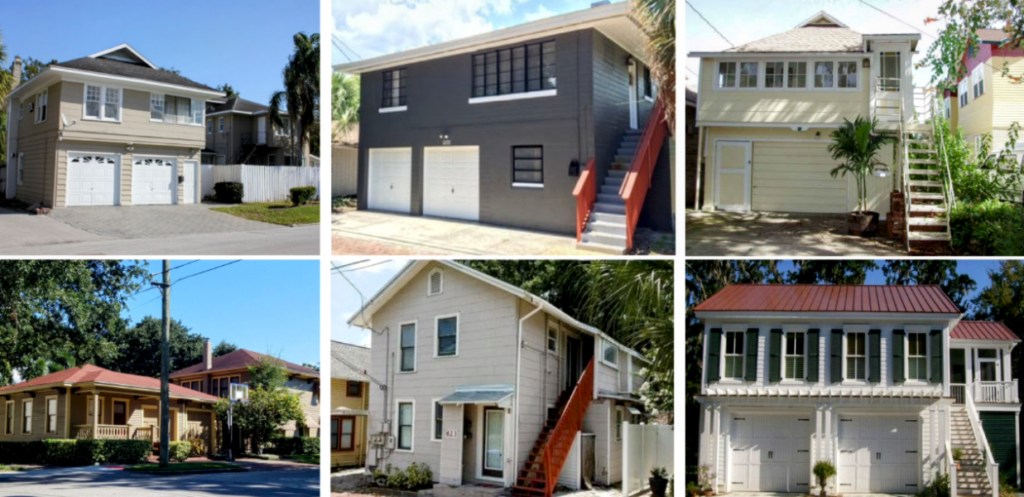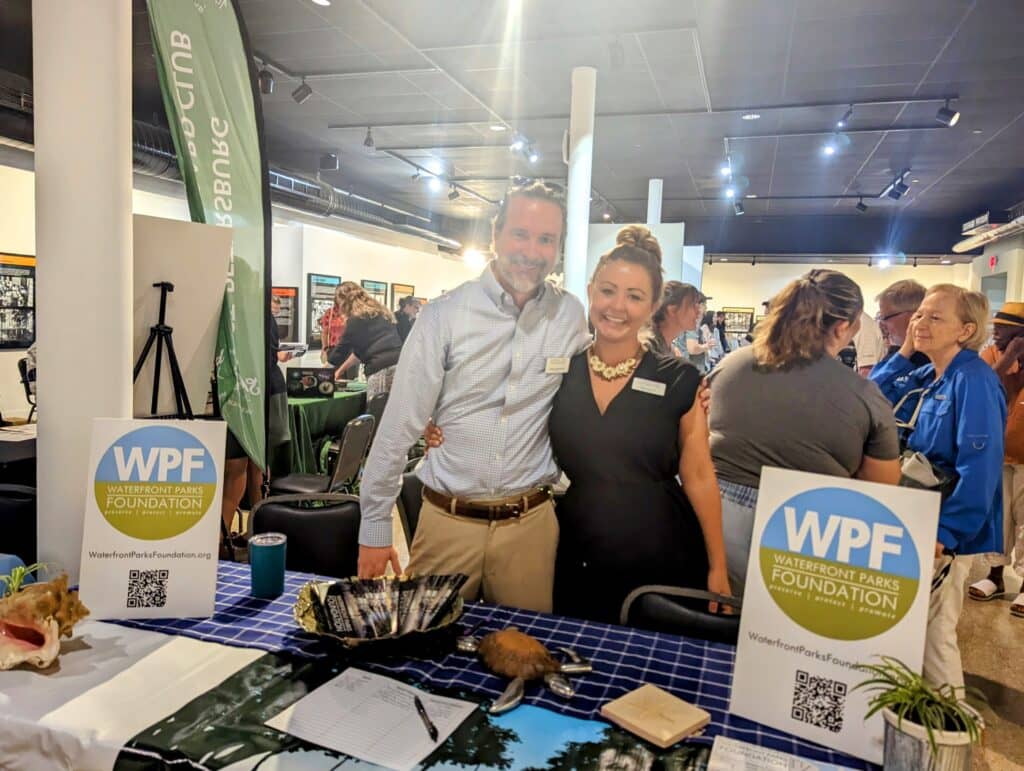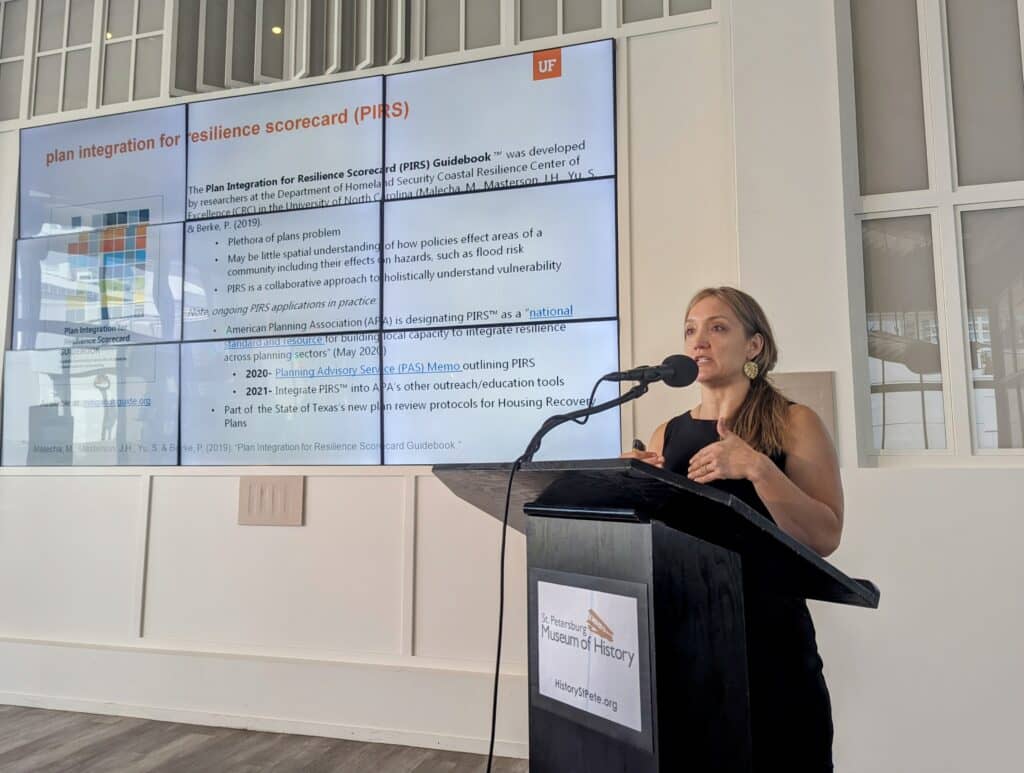How preservation, affordable housing intersect

Preserve the ‘Burg’s leadership realizes that existing housing stock, even in historic districts, can provide affordable housing opportunities without government subsidies.
Ensuring residents can remain in the city – and neighborhood – they love was a focal point of the organization’s second annual Preservation Summit & Expo. Executive Director Mannie Leto partnered with Pinellas County urban planning and preservation officials to combine two separate events Friday at the St. Petersburg Museum of History.
Between a full day of presentations, Leto noted the overlap between historic properties and attainable housing.
“Sometimes the most affordable homes are the ones that already exist,” he said. “It’s pretty difficult to build new housing that is affordable without incentives.”
Leto added that keeping existing housing in place is one solution to the affordability crisis. Using South St. Pete as an example, he said stakeholders could invest in restoring smaller, older homes instead of “starting from zero.”
“Historic preservation doesn’t exist in a vacuum,” Leto said. “So, we’re talking about how historic properties and neighborhoods relate to other issues like affordability and sustainability.”
One of those neighborhoods is St. Pete’s Historic Kenwood. In 2003, before the latest push to increase density and housing options, the area featured 197 garage apartments.
That is because many early 20th century builders and homeowners saw the value in creating what they once called carriage houses and now exist under the accessory dwelling unit (ADU) umbrella. City officials are now incentivizing those additions – and judging by community engagement in the “Honoring the Past … Designing for the Future” presentation, there is extensive community interest in bolstering the local ADU supply.
New zoning regulations allow ADUs on 70% of all St. Petersburg lots, and city programs offer financing incentives and rehabilitation rebates. Alec Smith, principal architect for Boone Architectural Restoration, noted homeowners in local and nationally designated historic districts – like Kenwood – could receive ad-valorem tax exemptions, even if their property lacks that classification.
“Which essentially locks in your property taxes to the existing value of your home for 10 years, before the cost of construction,” Smith explained. “Because typically, when you build new on a house here, your home value is going to increase.”

Examples of traditionally styled ADUs. Screengrab.
However, the historic designations do not prohibit demolition. Kenwood is a focus area as it encompasses nearly 80% of St. Pete’s contributing homes in local historic districts.
Smith relayed that ADUs adjoining century-old houses can skirt current building codes and regulations. New construction and conversions require approval from the city’s Community Planning and Preservation Commission.
Smith stressed that residents and builders must strike a “happy balance between what is historically appropriate and what the zoning code requires.” He encouraged those interested to discuss plans with city officials, many of whom were in attendance.
“The homeowners that have battles with the staff are the ones that didn’t reach out to them, didn’t talk to them and didn’t kind of get to know what is really important about the character of your neighborhood,” Smith added. “You know, when we do these projects, it’s not just about your project. It’s about your neighborhood and neighbors.”
The summit highlighted dozens of organizations working to conserve and restore local homes, history and waterways. A packed expo hall featured representatives from the City of St. Petersburg’s preservation department, the county’s Heritage Village, Car Free St. Pete, the University of South Florida St. Petersburg’s Special Collections team and the Waterfront Parks Foundation.

Logan DeVicente (left), president of the Waterfront Parks Foundations, and Jenna Byrne, board member and founder of the Water Warriors Alliance, were among dozens of vendors in the summit’s expo area.
Another summit aspect was ensuring the area’s affordable housing and historic neighborhoods remain sustainable amid increased flooding and sea level rise. Andrea Galinski, assistant scholar for the University of Florida’s School of Landscape and Architecture, unveiled the UF-Shimberg Center for Housing Studies’ latest local environmental data.
She relayed that the study identifies current and future flood hazard areas and highlights the most vulnerable residential neighborhoods. About 13.8% of the county’s housing stock meets affordability thresholds, with 2.8% receiving government subsidies.
Naturally occurring affordable homes account for 6.1%, and mobile homes comprise the remaining 4.5%. Pinellas is home to over 373,000 residential units, and 53.9% are in districts considered flood hazards.
That number increases to 59.5% by 2070. However, the percentage of flood-prone affordable homes jumps from 49.1% to 59.3% in the same period.
Mobile homes are the most at risk, with 59% located in a flood hazard district. That soars to 77% by 2070.
Homes considered historic are less susceptible to flooding and sea level rise. Galinski noted that 21%, or 7,600, exist in flood-prone areas. That only increases to 29% by 2070.
“It seems like we have a lot of strong policies along the coast, but we also want to make sure we’re thinking about flood hazards in the interior areas,” Galinski said. “Because we know we have extreme rainfall, urban flooding – we want to ensure that we do have this comprehensive approach.”

Andrea Galinski, assistant scholar for the University of Florida’s School of Landscape and Architecture, unveiled the UF-Shimberg Center for Housing Studies’ latest local environmental data.
While Pinellas scored well compared to other counties, she relayed that land development code incentives and housing plans left room for improvement. Galinski reiterated the need for holistic policy approaches that better account for increasing flood risks.
However, she credited county and city stakeholders for being “at the leading edge” of sustainable housing aspirations in Florida.
“I would say that you are among the more progressive jurisdictions, looking at these issues and caring deeply about them,” Galinsiki added. “I think there is a lot of support and interest in advancing this.
“I think you guys are doing a great job.”








Linda
May 22, 2023at7:52 am
Best idea yet:
“Leto added that keeping existing housing in place is one solution to the affordability crisis. Using South St. Pete as an example, he said stakeholders could invest in restoring smaller, older homes instead of “starting from zero.””